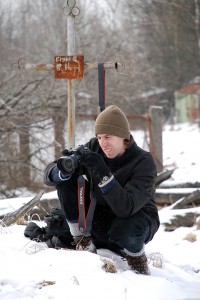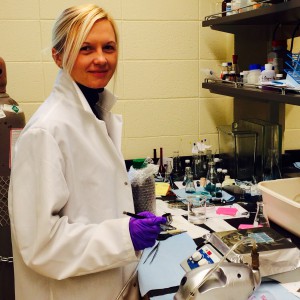
Michael Forster Rothbart, 2008-2009, Ukraine, taking photos in the Semikhody graveyard less than a mile from the Chernobyl Nuclear Power Plant
The following blog post is by alumnus Michael Forster Rothbart, who coordinated the compilation and assembly of the current Fulbright Alumni Photography Exhibit, now showing in The Atrium Gallery at the Ronald Reagan Building, 1300 Pennsylvania Avenue, NW, Washington, DC, through November 10, 2014. Opening reception and gala to be held at the gallery on Friday, October 17 at 5:30 p.m. Visit the gallery’s Facebook page to learn more.
One month into my Fulbright U.S. Student Program grant to Ukraine, I moved to Sukachi, a village of 1,200, ten miles from the Chernobyl Exclusion Zone.
What’s it like to live near Chernobyl? It depends who you ask. “Is it even safe?” they asked in Kyiv. “Why would you want to live up there, in the middle of nowhere?!” But when people in Sukachi asked where I lived, I said I rented a room from Nina. “Oh, how convenient,” they’d say. “That’s right in the middle of the village!”
I made friends. I drank vodka with my landlord Nina. I drank tea with Viktor. I photographed my neighbors. Sasha, a recovering alcoholic, taught me how to cut hay. Slava, a doctor at the Chernobyl plant, taught me to make borscht. I went to church. I lived my life like the locals as much as I possibly could.
My commitment to this project began when I discovered how most photojournalists distort Chernobyl. They visit briefly, expecting danger and despair, and come away with photos of deformed children and abandoned buildings. This sensationalist approach obscures the more complex stories about how displaced communities adapt and survive.
In contrast, I sought to create full portraits of these communities. I saw suffering, but also joy and beauty, endurance and hope. Living directly in the villages where I photographed gave me access to events and people with an insider’s perspective.

